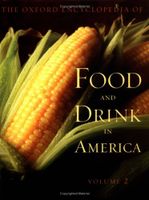The plantation system that would come to define much of the South of the eighteenth and nineteenth centuries had its origins in West Indian sugar plantations. On crowded Barbados, a handful of royalists who restored Charles II to the throne of England were granted all of the land south of Virginia. Carolina was settled in 1670 at Charles Town (later Charleston), and quickly the lush, subtropical Low Country revealed its wealth as rice-growing land. West African rice farmers were enslaved and brought to Carolina by the thousands. By 1708 there was a black majority in the colony, and a Creole cuisine that borrowed heavily from English, French, Caribbean, and African traditions had begun to emerge. Politically and culturally Carolina was different from the other colonies. The English philosopher John Locke had written a constitution for Carolina that established a proprietary government based on an aristocracy of landowners. Locke included religious freedom as a basic right of Carolinians; the religious fugitives of Europe flocked to the colony. By 1750 half of the white settlers were French Huguenots, and Charleston had the largest Jewish population in the New World. The Jews were Sephardic, and they brought Mediterranean cooking traditions with them, such as sun-drying tomatoes and making pasta. A strong settlement of Lutherans from the Palatinate was established seventy miles inland in 1730; they grew wheat and cabbage and raised dairy cattle for the Low Country gentry, whose rice plantations were becoming enormous operations run by thousands of slaves. Charleston was one of the richest and busiest ports in the New World.



